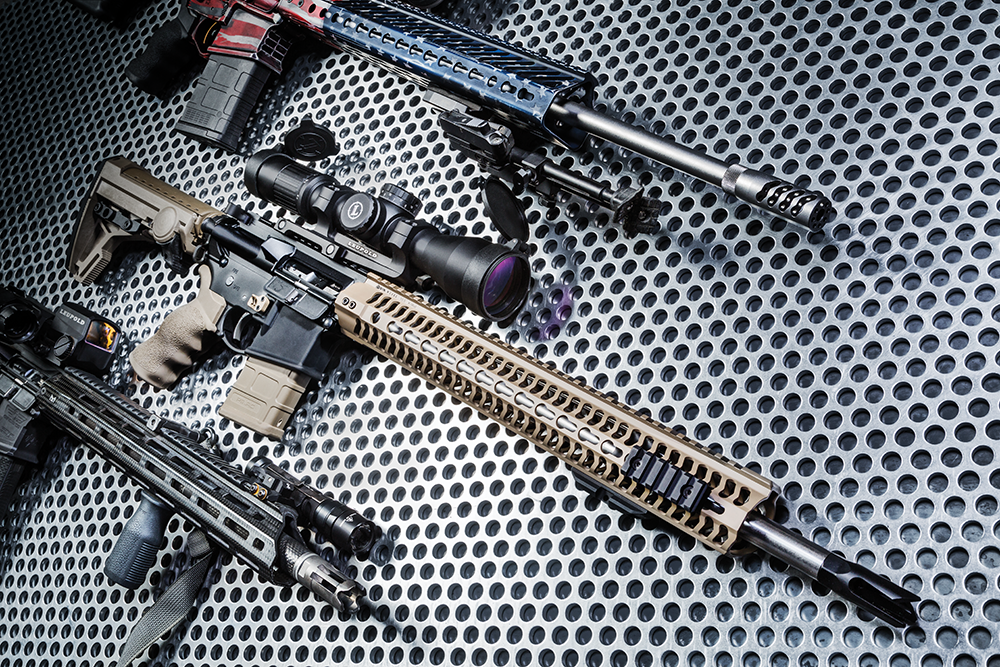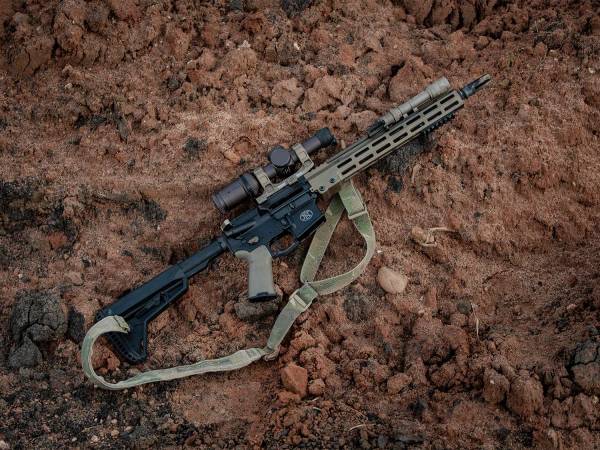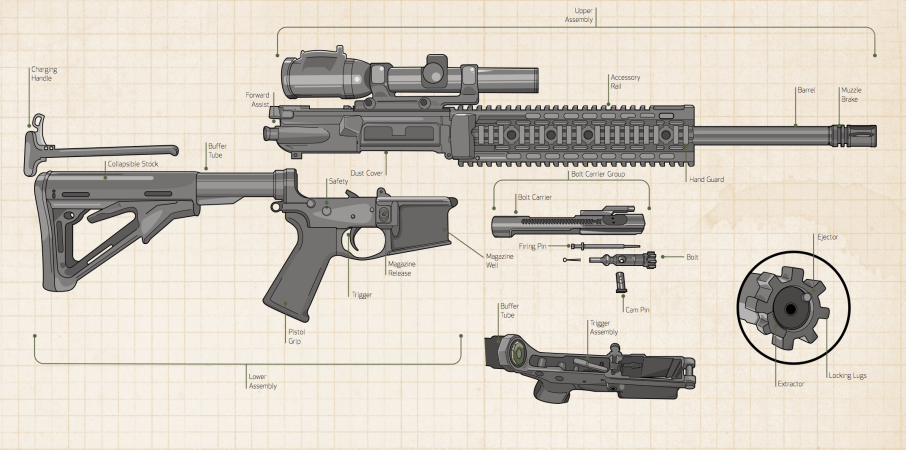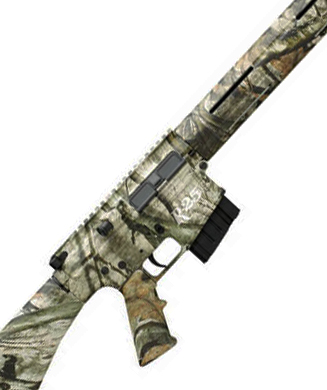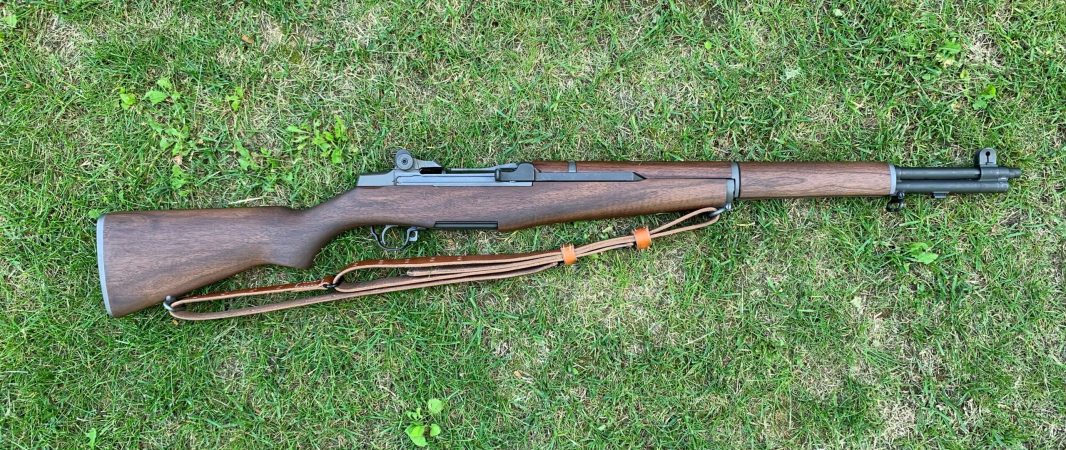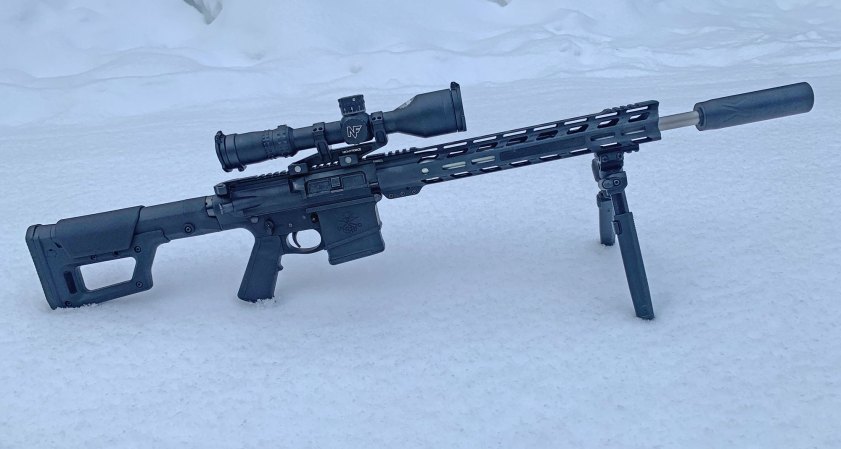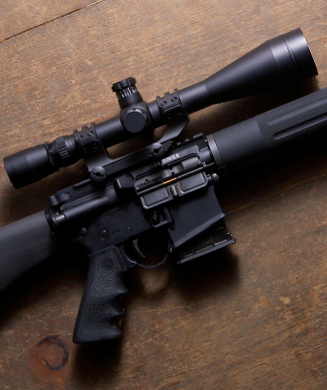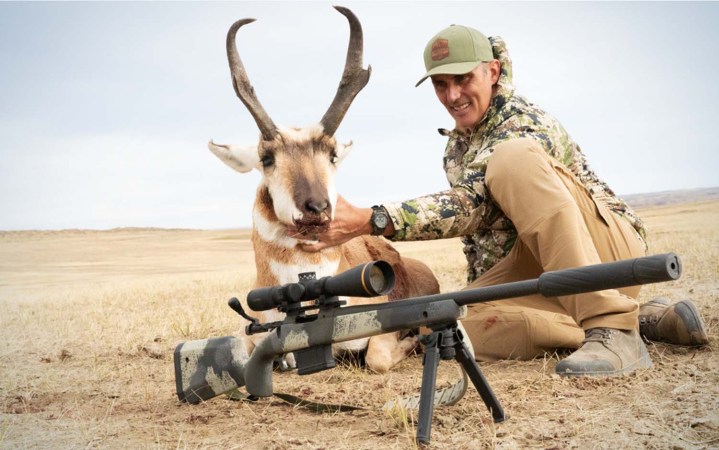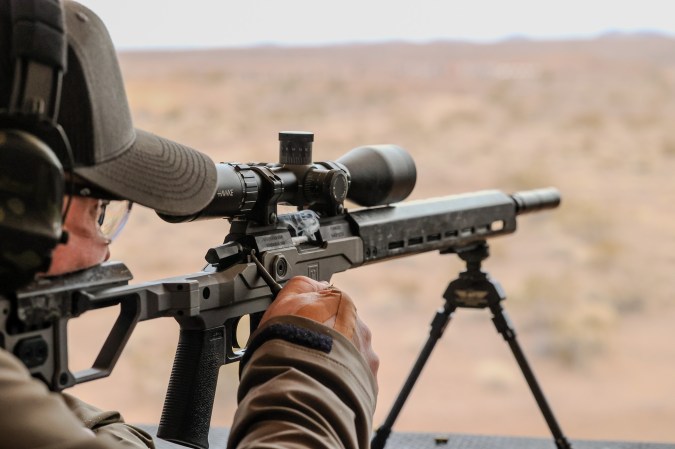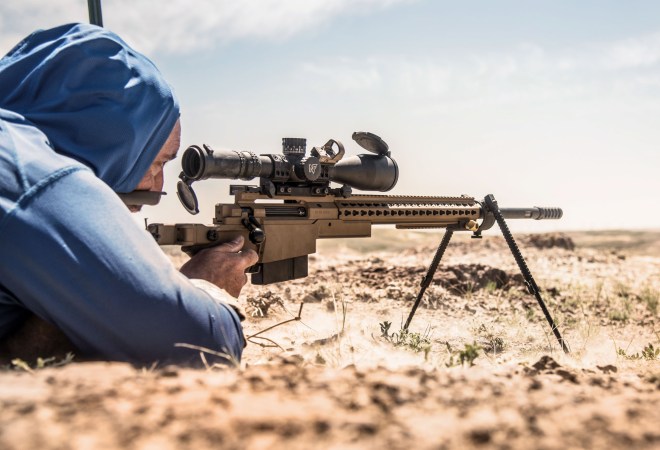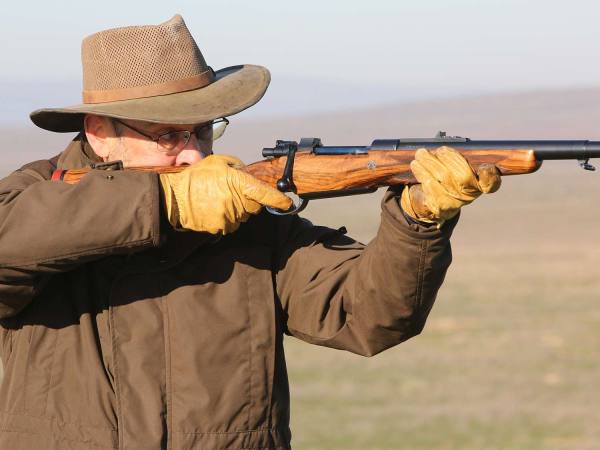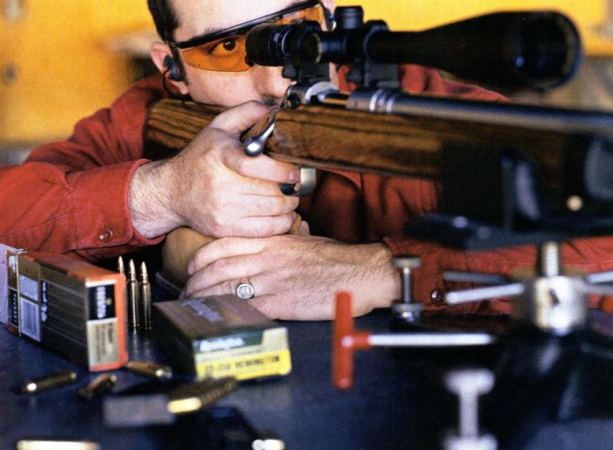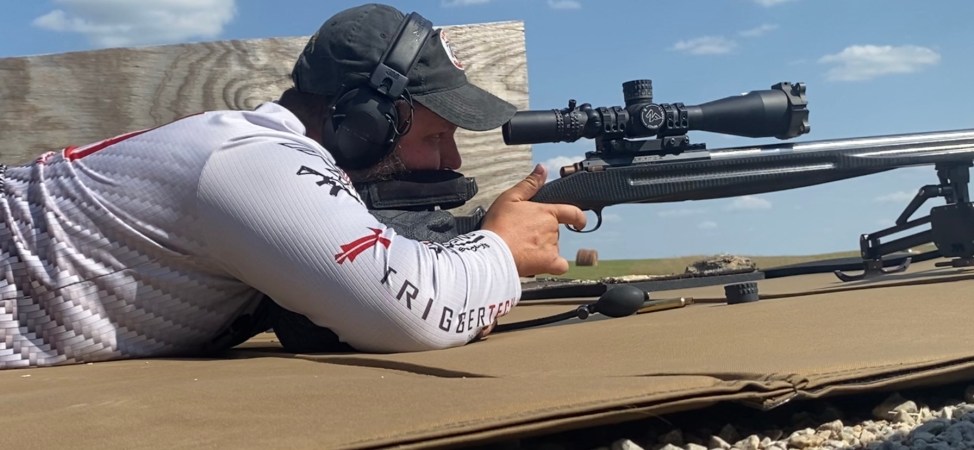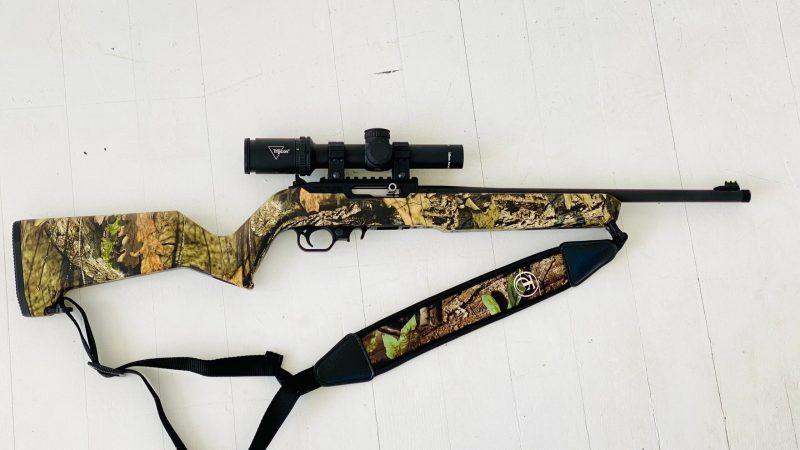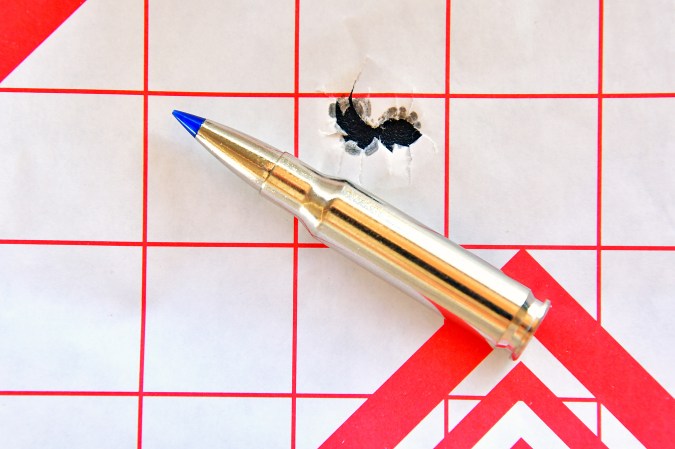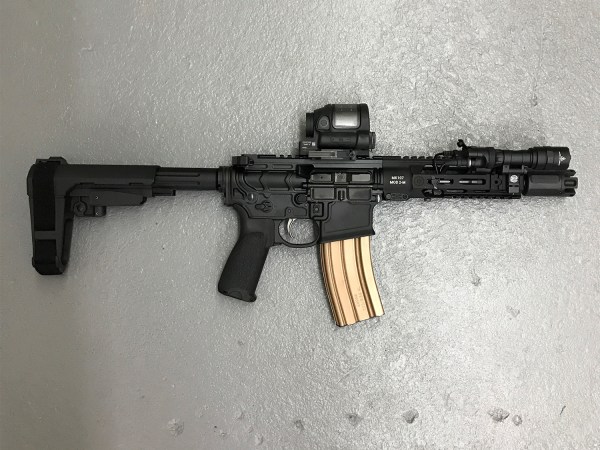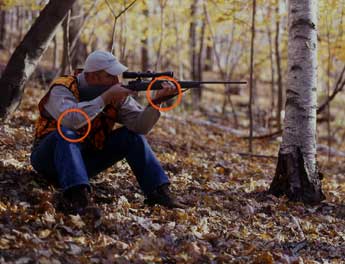We may earn revenue from the products available on this page and participate in affiliate programs. Learn More ›
Even for people who know little or nothing about firearms, the outline of an AR-15 is widely recognizable. More than that, it is a shape that has meaning. While terms like M16, M4, and AR-15 might be greeted with a blank stare, the iconic silhouette of an AR carries with it a host of associations, both good and bad, depending on the viewer’s perspective.
It evokes images of the military, given that the M16 and its descendants have been the main battle rifle of the United States for more than half a century. We’ve seen it wielded by Marines in Hue City, carried by soldiers across the sands of Iraq, and thrust bayonet first into the ground, adorned with helmet, boots, and dog tags, to form a Battlefield Cross commemorating our fallen. It has become a symbol of the American warrior.
Among anti-gunners, it is a malevolent object, something with a sole purpose: to kill as many people in as short a period of time as possible. For these folks, and their like-minded elected representatives, features like pistol grips, flash hiders, collapsible stocks, and high-capacity magazines (insert your favorite “clip” quip here) are what separate the AR from other semi-auto rifles, elevating it to the status of Public Enemy Number One. As such, efforts to restrict, ban, confiscate, and otherwise keep the AR out of civilian hands is their top priority. Never mind that ARs are used in the barest minority of firearms crimes, and that crime rates continue to fall to historic lows. (In 2014, rifles were used in 248 homicides, compared to 11,961 killings of all types, including 660 by unarmed attackers, according to FBI statistics. There is no subset of data that addresses ARs specifically.) It is the high-profile shootings that motivate these people and their belief that there is no “need” for ARs, despite the fact that “needs” do not figure into the discussion of our well-established Constitutional rights.
Then there’s the way that ARs are perceived among sportsmen. There has been a sea change in attitudes toward ARs and other “black” rifles in the last 15 years, which followed the precedent set by Springfields, Mausers, Garands, and other military arms that were embraced by sport shooters. The sharp lines of demarcation between AR shooters and other gun owners—specifically, hunters—have been blurred and the us-versus-them mentality of the “Rambos” and the “Fudds,” which used to be the prevalent dynamic, is now just a sideshow perpetuated by a few bitter, diehard clingers.
What we’ve seen over that time is the rise of the AR, which has become America’s most popular rifle, as well as the greatest battle rifle of all time.
How did this happen?
DORMANT PERIOD
Think of the AR as a seed planted in the 1960s, when the military adopted the rifle, known both as the M16 and the XM16E1 initially.
The rifle got off to an inauspicious start in Vietnam. Shoddy construction in the form of barrels and chambers that hadn’t been chrome-lined, poorly made ammo that used the wrong type of powder, and the lack of cleaning equipment and training for the troops who were issued the rifles led to disaster on the battlefield. Rifles malfunctioned, and soldiers and marines died. The grunts and GIs lost faith in the M16, and Colt, which had purchased the manufacturing rights to the rifle from Armalite in 1959, had a public-relations disaster on its hands.
The fallout of that era created a tide of ill will and misinformation—like the myth of the M16’s tumbling bullets—that kept the AR seed dormant for decades while the military slowly modified the platform to address its shortcomings.
The M16A2 made its official debut in 1982 and featured a heavier barrel, a faster twist rate, and a three-round burst mode in lieu of a full-auto setting. Then, in the mid-’90s, models like the M4 and M16A3 were introduced, with flattop receivers with Picatinny rails and adjustable telescoping stocks and shorter barrel lengths.
These evolutions in the platform augmented the AR-15’s excellent ergonomics, and gave the rifles more flexibility and modularity to adapt to different missions. And finally the seed could grow and bloom. What the AR needed for this to happen was a catalyst, and it came from an unlikely source: the 1994 Federal Assault Weapons Ban (AWB), which was signed into law by President Bill Clinton.
UNINTENDED CONSEQUENCES
The AWB was authored by Sen. Dianne Feinstein (D-CA) and prohibited the sale of semi-automatic rifles with detachable magazines that had more than one of the following features: pistol grips, threaded barrels, bayonet lugs, folding or collapsible stocks, flash suppressors, and grenade-launcher mounts. Similar provisions applied to semi-automatic pistols and shotguns. The ban also limited magazines to a 10-round-maximum capacity.
The goal of this was, of course, to kill off these semi-autos in the name of public safety. The “logic” being that these guns—AKs and ARs, in particular—contributed to crime because of their cosmetic and ergonomic features.
At first it did seem that the AWB had taken the legs out from under the AR platform. Major gunmakers backed away from the category and stopped aggressively marketing the rifles to civilians.
“Before the assault weapons ban, ARs were expensive, hard to find, and didn’t work all that well,” says firearms expert Michael Bane. “When it came on, all the big players got scared off, and this opened the market. For that 10-year period [before the AWB expired in 2004], the little guy got the innovative edge because there was no one there to knock them off.”
Into that vacuum stepped entrepreneurs and innovators like Randy Luth, Karl Lewis, and Jack and Teresa Starnes who saw the potential of the AR and started introducing everything from aftermarket parts and accessories to complete rifles.
It was during this period that the AR realized its potential as a modular platform. The adaptation of the Picatinny rail system created new possibilities for accessories. The early innovators also weren’t afraid to take chances, inventing new categories of products that had never been associated with ARs before. It ushered in a golden age in the mid- to late ’90s during which the pages of publications like Shotgun News were filled with dozens of ads hawking products for ARs. Armed with nothing more than a phone and a credit card, a gun owner could reinvent his rifle by changing out barrels, handguards, triggers, stocks, and optics. And once the economic doldrums took hold of the gun industry in the mid-2000s, it was the sustained enthusiasm for ARs that kept the gun industry afloat and drove most of the innovation. Contrary to popular stereotypes, the people attracted to this market weren’t basement-dwelling doomsdayers, but were competitive shooters, hunters, active-duty military personnel, and enthusiasts who loved to tinker with their guns.
This created an information feedback loop with the upstart manufacturers that tested ideas, techniques, gear, and tactics in real-world scenarios—in the early outlaw 3-Gun matches, in the deer woods, and on the battlefield.
The results of this vetting process were spectacular. Not only were the kinks worked out of the original system, but the AR came to take on tasks that certainly never occurred to Armalite’s Eugene Stoner when he designed it.
As a battle rifle, it can engage opposing forces accurately at distances a fighter with an AK couldn’t dream of. Accurized for precision rifle work, it can shoot tight groups at 1,000 yards. For hunters, it can be lightened up and chambered in hard-hitting cartridges for any type of large game.
But most important, the AR has become a bridge for shooters, connecting what used to be disparate communities of firearms owners and uniting them around its modular platform, encouraging people who used to stand toe-to-toe instead to fight side-by-side to protect our rights.
Any rifle that can boast this series of accomplishments deserves to be called the greatest, no question about it.

KYLE LAMB, the OPERATOR
RIFLE PROFILE: **With no optics the VTAC-15 weighs just 5.5 pounds. It is a rugged, lightweight, and portable carbine.
**CLAIBER:5.56 NATO/.223 Rem
OPTIC:Leupold DEVO and LCO
WEIGHT (SCOPED): 8 lb. 7 oz.
OVERALL LENGTH: 33 in.
BARREL LENGTH: 16 in.
TRIGGER: VTAC Truss Trigger
BASE PRICE: $2,795
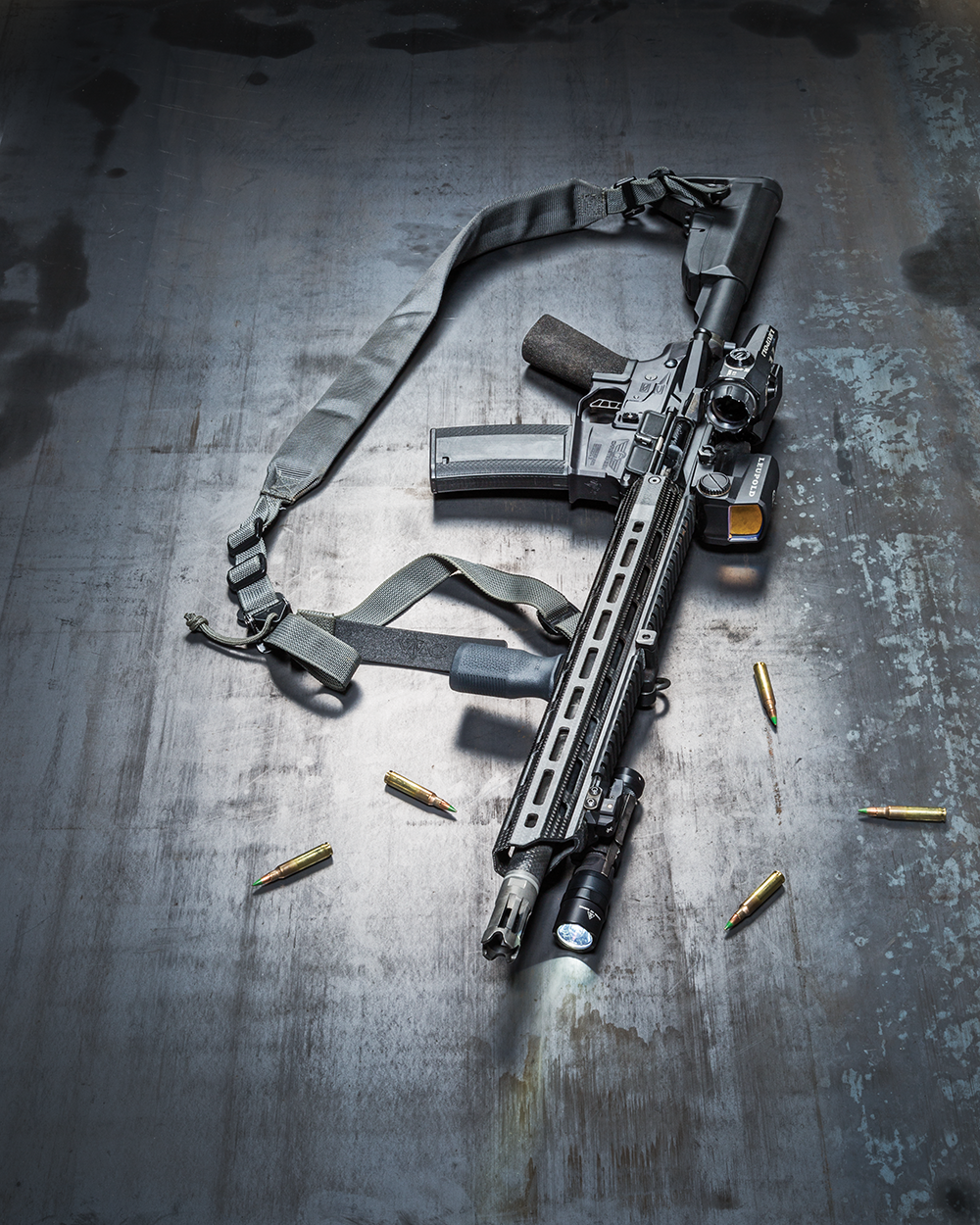
Kyle Lamb doesn’t have any patience for the haters. After more than two decades in the Army, most of it spent in special operations with Delta Force, he’s seen enough combat and has headed up enough training to know exactly what the modern-day descendants of the original M16 can do.
“People hate this gun. Even people on our side,” Lamb says. “But it is the most modular and accurate battle rifle we’ve ever had on the planet. The AK? It’s great too—unless you’re actually trying to hit somebody.”
Lamb’s military career, which started in 1986, coincided with the evolutionary refinement of the M16. This isn’t surprising, given that Lamb and his fellow soldiers in the special operations community were key players in perfecting the platform.
After Lamb joined Delta Force and started shooting every day, he learned how to get more out of the M16 and saw where it needed improvement.
In combat Lamb and his colleagues discovered one shortcoming was the sights.
“We showed up in Somalia with Aimpoints with big red dots. The dots were bigger than the dudes we were shooting at,” Lamb says. “So we got into better sights. Guys started adding regular hunting scopes to the rifles and making shots out to 400 yards.”
The tactical evolution of the platform progressed quickly from there. Lamb and other Delta Force soldiers upgraded internal components like extractors for greater reliability. They added free-float handguards to improve accuracy. They slapped on Picatinny rails to mount other accessories. The AR platform became lethal for everything from long-range engagements to close-quarters battle.
But one thing that was also added through all this was weight. Lamb—who retired from the Army in 2007 and founded Viking Tactics, which offers high-end training and accessories—has continued to refine the AR, in many ways by taking it back to its roots.
“The M16 started as a 6-pound gun, but then it turned into a 7- or 8-pound gun,” Lamb says. “Now, with the rifles I’m doing with Christensen Arms that weigh 5 ½ pounds and shoot ½ MOA, we’re back to a lightweight rifle that balances and is easy to carry.”

TOM HINES, the INNOVATOR
RIFLE PROFILE: A DIY conversion to turn a low-cost stock Ruger AR-556 in .223 Rem. into a 1,000-yard rifle.
CLAIBER: 6.5 Grendel
OPTIC: Leupold Mark 6 3-18×44
WEIGHT (SCOPED): 9 lb. 14 oz.
OVERALL LENGTH: 36 in.
BARREL LENGTH: 18 in.
TRIGGER: Stock 2-stage trigger
BASE PRICE: $599
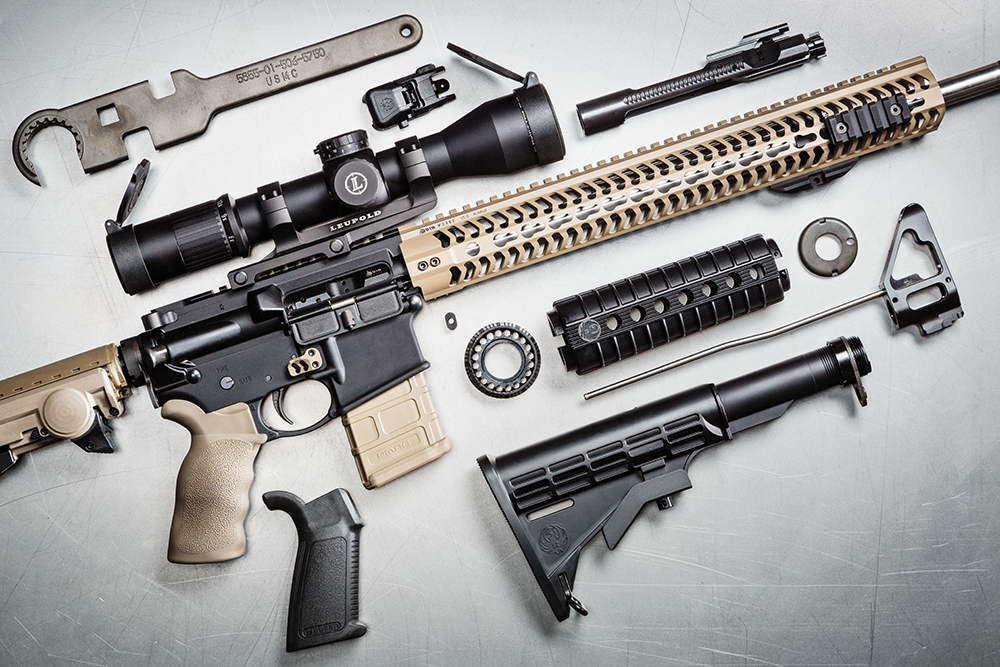
Growing up on a farm in Idaho gave Tom Hines two important things. First, he learned how to fix things that were broken through hard work and improvisation. Second, it put guns into his hands from as early on as he can remember. Add to this an active imagination, and it isn’t surprising that Hines is one of the leading innovators in the AR market.
A pivotal moment for Hines was when he spent $5,000 to purchase his own machining equipment after going to school at Boise State University.
“Lots of guys will make napkin sketches of their ideas but never have the money to make a prototype,” Hines says. “But after I bought a mill, it gave me the ability to think and create something. It’s kind of the American boys’ dream.”
And create he did. He worked with various firearms companies making everything from suppressors to handguards, giving his tinkerer’s mindset and passion for firearms room to roam.
He launched his own company, Odin Works, three years ago, focusing on parts for ARs. Since ARs have so many standardized components, like the Picatinny rail and KMod mounting systems, it is an ideal platform for innovation. “Because things are standard, there’s no need to reinvent the wheel.
Instead, we can work on making the wheel better,” Hines says. “That’s how we can take an inexpensive AR, like a $599 Ruger, and in 45 minutes turn it into a rifle that can hit a Larue target at 1,000 yards with factory ammo.”
Even something that looks simple, like a hand stop, can require dozens of iterations to get right. It all goes back to putting in the hard work.
“For every 1,000 ideas, maybe 10 are worth prototyping,” Hines says. “And of those, one is worth bringing to market.”

JONATHAN MATHER, the GAME CHANGER
RIFLE PROFILE: The Ruger Precision Rifle is an AR-inspired bolt gun for long-range precision shooting.
CLAIBER: 6.5 Creedmoor
OPTIC: Vortex Crossfire II 4-16×44
WEIGHT (SCOPED):8 lb. 14 oz.
OVERALL LENGTH:43 in.
BARREL LENGTH:24 in.
TRIGGER:Ruger Marksman Adjustable
BASE PRICE:$1,399
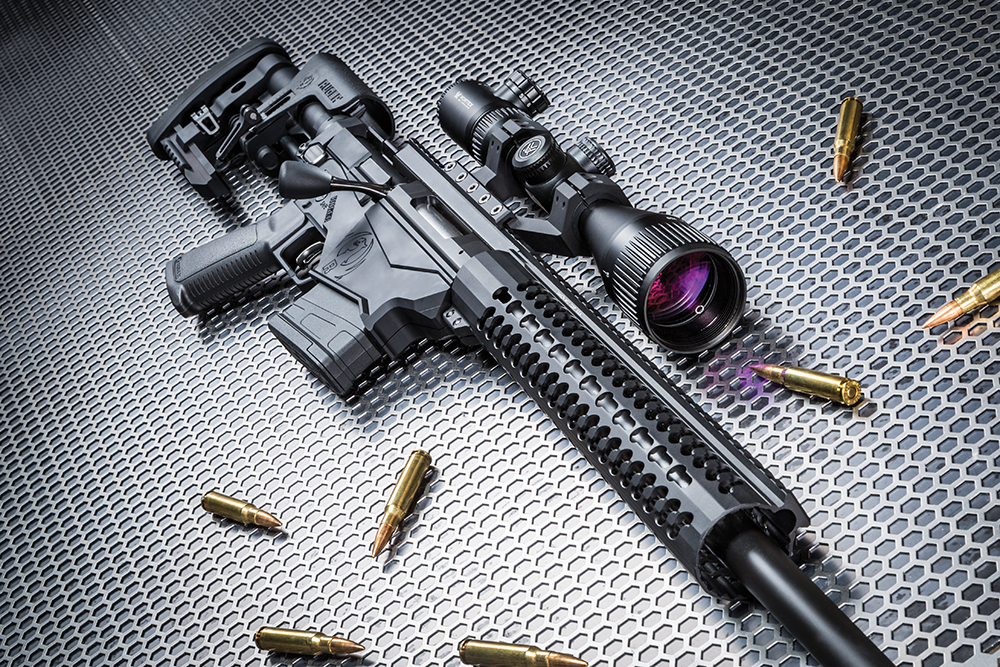
Combine Yankee self-reliance with training as a mechanical engineer and you end up with someone who likes things done right—preferably by his own hand. As much as anything else, this is what drew Jonathan Mather to ARs.
Before joining Ruger nearly four years ago as a lead product design engineer, Mather spent his free time building bolt guns and ARs. Even though the Maine woods where he grew up didn’t afford him much opportunity for long-distance shooting, precision firearms were his passion.
“I was always interested in precision shooting. To me, it was the pinnacle of physics—to get this little projectile to fly the same way to the same place every time,” Mather says. “And ARs are a natural platform for building very precise rifles without needing to write a large check to a gunsmith.”
Once at Ruger, Mather showcased his talents in a bigger way as the lead engineer on the Ruger Precision Rifle, which is an accurate and affordable bolt-action that draws heavily on the AR platform, and is a perfect example of how ARs have come to influence other firearms.
From the start, Mather and his team knew they wanted the rifle to feed from AR-type double-stack magazines, given how common they are and how well they would work with the three-lug bolt in Ruger’s American action. This created a domino effect that led to the incorporation of a host of AR features because of the ergonomics, functionality, and user-customization they offer.
An AR-style handguard allowed Mather to free-float the barrel for accuracy while freeing up space (and weight) in the lower receiver. From here, it was a natural progression to use a buttstock and a grip with AR geometry so that the shooter would be properly positioned behind the rifle. (For a scope to clear an AR handguard, it needs to be mounted high on the receiver, so an AR-type stock with a higher cheek height makes sense.) These ergonomics make the rifle shoot better because the barrel lines up so that it recoils directly into the shooter’s shoulder, minimizing muzzle jump.
“We could have easily created a new chassis system with proprietary parts,” Mather says. “But by going directly to the AR, with all its aftermarket support, you can customize it to your heart’s content.”

JOHN PAUL, the INVENTOR
RIFLE PROFILE:A compact carbine that can run on the same ammunition and magazines as the shooter’s handgun. (Below, left)
CLAIBER:9mm Parabellum
OPTIC:Trijicon SRS
**WEIGHT (SCOPED): **9 lb. 1 oz.
**OVERALL LENGTH: **32 in.
**BARREL LENGTH: **16 in.
**TRIGGER: **Armageddon Gear Roller Trigger
**BASE PRICE: **$1,499
Yes, John Paul has been successful when it comes to making high-performance ARs, and he has redefined what an AR can be with his inventions. What has driven him? Well, it isn’t the money.
“I’m a lousy businessman,” Paul says. “I do this because I’m in the game and I like to compete. I’m always trying to solve my own problems.”
During one long-range match, his rifle suddenly lost its zero—and then later suddenly regained it. He pulled his rifle apart to figure out what had caused this mysterious change and learned that the block holding his swivel stud had come in contact with the gas block on his barrel before shearing off completely. His answer was to create a low-profile gas block that made such a thing impossible.
This same mentality was behind the design of his single-stage competition AR trigger, which many competitive shooters didn’t think would work reliably in a semi-auto. “The trigger is what put JP Enterprises on the map,” he says. “All the money we made on it was rolled back into R&D.”
His innovative side-charging system was born of the desire to fix what Paul saw as the weak link in the AR action. “I never liked the standard charging handle,” he says. “It is the Achilles’ heel of the rifle. It’s too easy to bend it and put the rifle out of service.”
His most recent creation is a 9mm carbine that improves on previous models because it takes ubiquitous Glock magazines and offers better recoil control during rapid fire. While having a carbine that runs on the same ammo and magazines as many duty guns can be appealing for law enforcement use, Paul’s motivation came down to something more basic.
“It’s just plain fun to shoot,” he says.
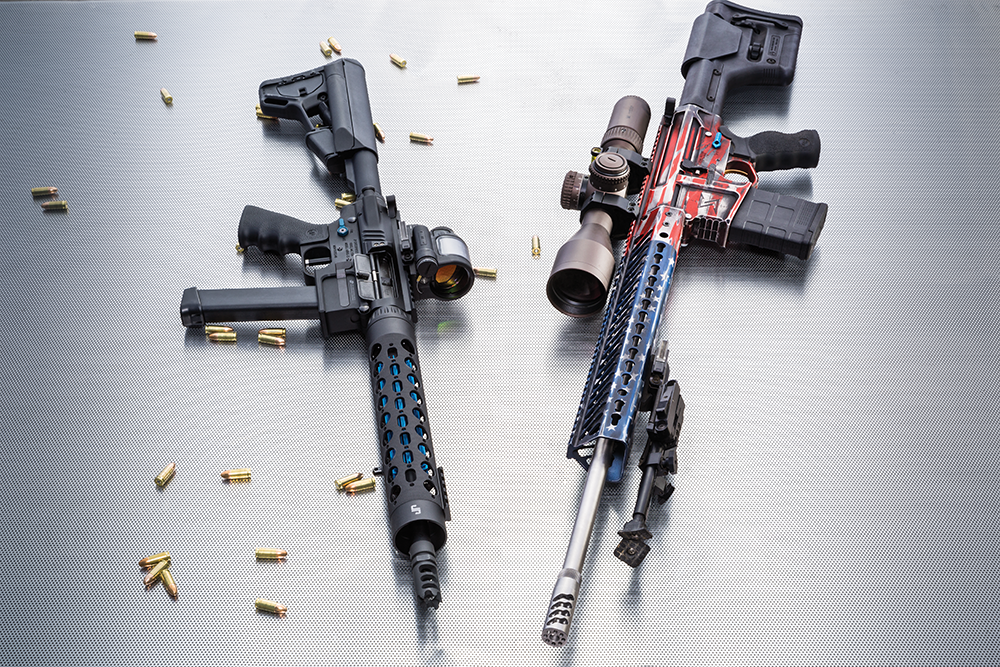
GLEN SEEKINS, the ACCURIZER
RIFLE PROFILE: **Long-range AR for tactical rifle matches. Flat-shooting .243 has minimal recoil for rapid follow-up shots. (Above, right)
**CLAIBER:243 Win.
OPTIC:Vortex HD Gen II 4.5-27×56
WEIGHT (SCOPED): **15 lb. 10 oz.
**OVERALL LENGTH: **44 in.
**BARREL LENGTH: **22 in.
**TRIGGER:AR Gold
**BASE PRICE: **$2,650

The idea of making an AR that is as accurate as a precision bolt-action rifle might seem like a fool’s errand. ARs have lots more moving parts, are loosely held together by two pins, rattle when shaken, and spew fouling back into the action when they cycle. But Glen Seekins likes a challenge.
One of the toughest things to figure out with an AR is how to take stress off the barrel. Even a regular free-float handguard touches the barrel nut, which itself is connected to the barrel, so that pressure on the handguard can degrade accuracy. Seekins put his mind to this problem and came up with a method to connect the handguard directly to the receiver. This integrated rail-mount upper receiver, which he introduced in 2009, was a game changer.
“That was the turning point, where we went from shooting okay groups to consistently shooting good groups. The rifles went from ¾-inch guns with random fliers to ½- to .6-inch guns,” he says.
Seekins has been chasing accuracy gains elsewhere in the AR system, too, experimenting with different cartridges, chamber dimensions, tolerances between parts, and handguard geometry.
One of his specialties is building ARs in .243 Win., which he competes with in long-range tactical matches. “Ours is a proprietary chamber that shoots and extracts really well. It took us two years to figure that chamber out,” he says.
The advantage of an accurate AR is that it can take on long-distance targets with a speed bolt-guns can only dream of. But for Seekins, this isn’t just about competition.
“I have a lot of friends in the military community and I want to build great stuff for them,” he says. “An AR with bolt-gun accuracy that is reliable will save lives.”

**RANDY LUTH, the VISIONARY
RIFLE PROFILE: **This is an early DPMS prototype rifle for big-game hunting and is the first AR in .300 SAUM.
**CLAIBER: **.300 SAUM
**OPTIC: **Nikon Active Target Special 3-9×40
**WEIGHT (SCOPED): **11 lb. 14 oz.
**OVERALL LENGTH: **33 in.
**BARREL LENGTH: **20 in.
**TRIGGER: JP Single Stage Adjustable
BASE PRICE: **N/A
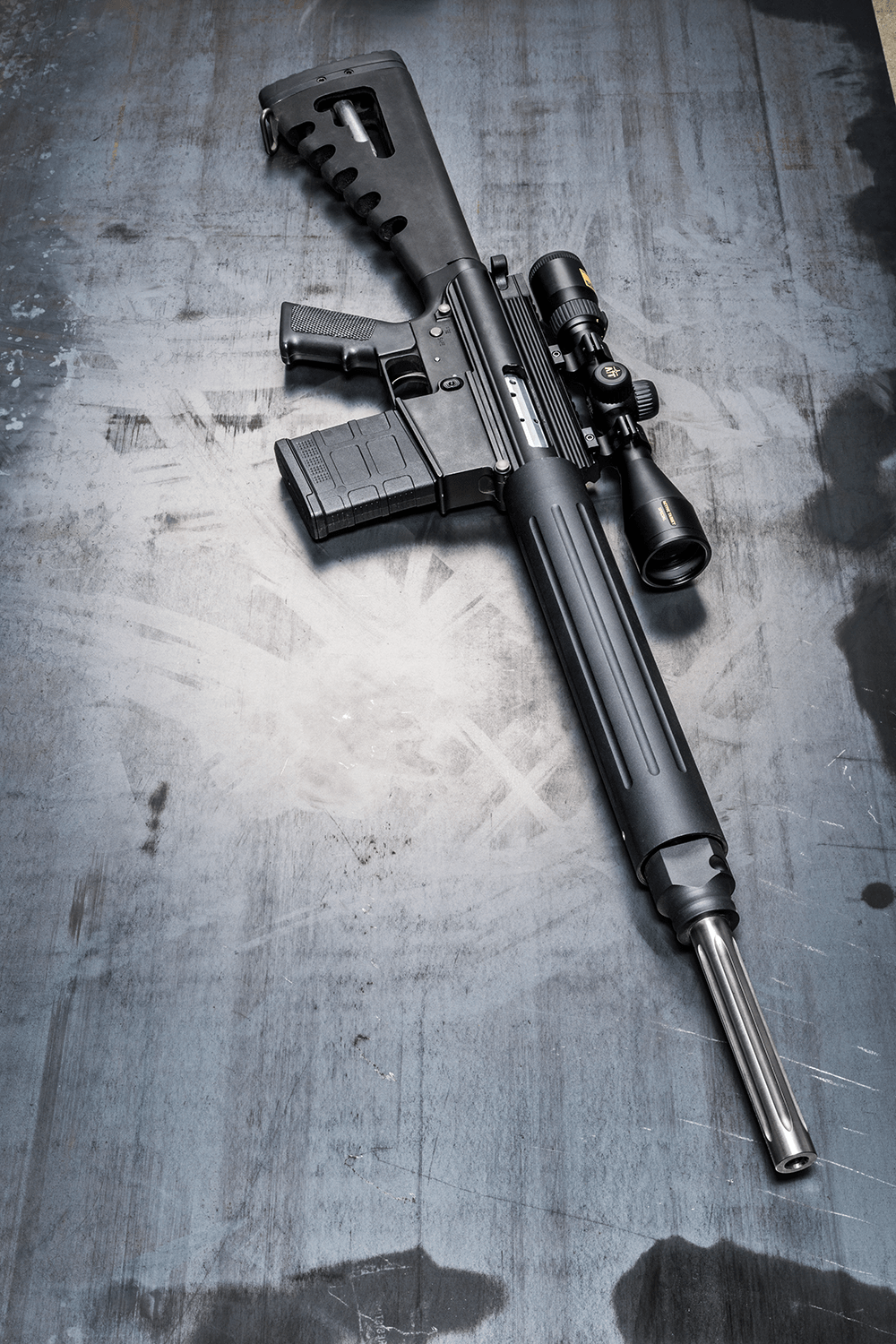
Randy Luth started his hunting career by making the most of what were some pretty thin opportunities. He grew up in Richfield, Minnesota, in the suburbs of Minneapolis, not far from the airport. Not exactly a game-rich nirvana.
“My buddy Richie and I would ride our bicycles to Cedar Avenue, jump the airport’s fence, and hunt pocket gophers and rabbits with our bows while 727s were landing around us,” Luth says.
Seeking out opportunities where other see obstacles has been a defining characteristic of Luth’s career. After starting DPMS in 1986, Luth brokered deals to sell M16 parts to companies such as Bushmaster and Olympic Arms.
His creativity and knack for marketing got him into manufacturing AR accessories, parts, and complete rifles. He pioneered several developments in the AR market, exploring avenues that turned out to be the path to the future.
Take the DPMS Tri-Mount, for instance. In the late 1980s, when Luth introduced this three-sided rail that attaches to an AR upper, the Picatinny system was largely unknown, even in the black-rifle community. Luth took the idea to one major manufacturer, who passed on it, so he decided to make it himself. Luth also offered the first production bull barrels for ARs, which today are so ubiquitous it is difficult to remember a time when they weren’t available. And he experimented with different materials and techniques, creating the first investment-cast lowers made of stainless steel and titanium.
Luth relied on his own passion and enthusiasm as a shooter to guide his business decisions, becoming an early supporter of 3-Gun shooting, sponsoring matches, building 3-Gun accessories, and competing avidly himself.
His most significant contribution, however, has been his advocacy of AR-type rifles for big-game hunting, a market DPMS created nearly all on its own. Luth built .308s with bull barrels that he made lighter by reducing barrel length, skeletonizing the stock, and removing excess metal from the upper. Naturally, he took them hunting, hauling them up mountains far from the prairie dog towns that most people associated with ARs.
“I had to get people to like black rifles and to take them hunting. So I used my pictures of an elk or a goat or a bear I had taken with an AR-15 and got people thinking, Why not? That would be fun. From there, it was why not do an AR in .260 Remington, or .300 SAUM, or .338 Federal?”
Why not, indeed.
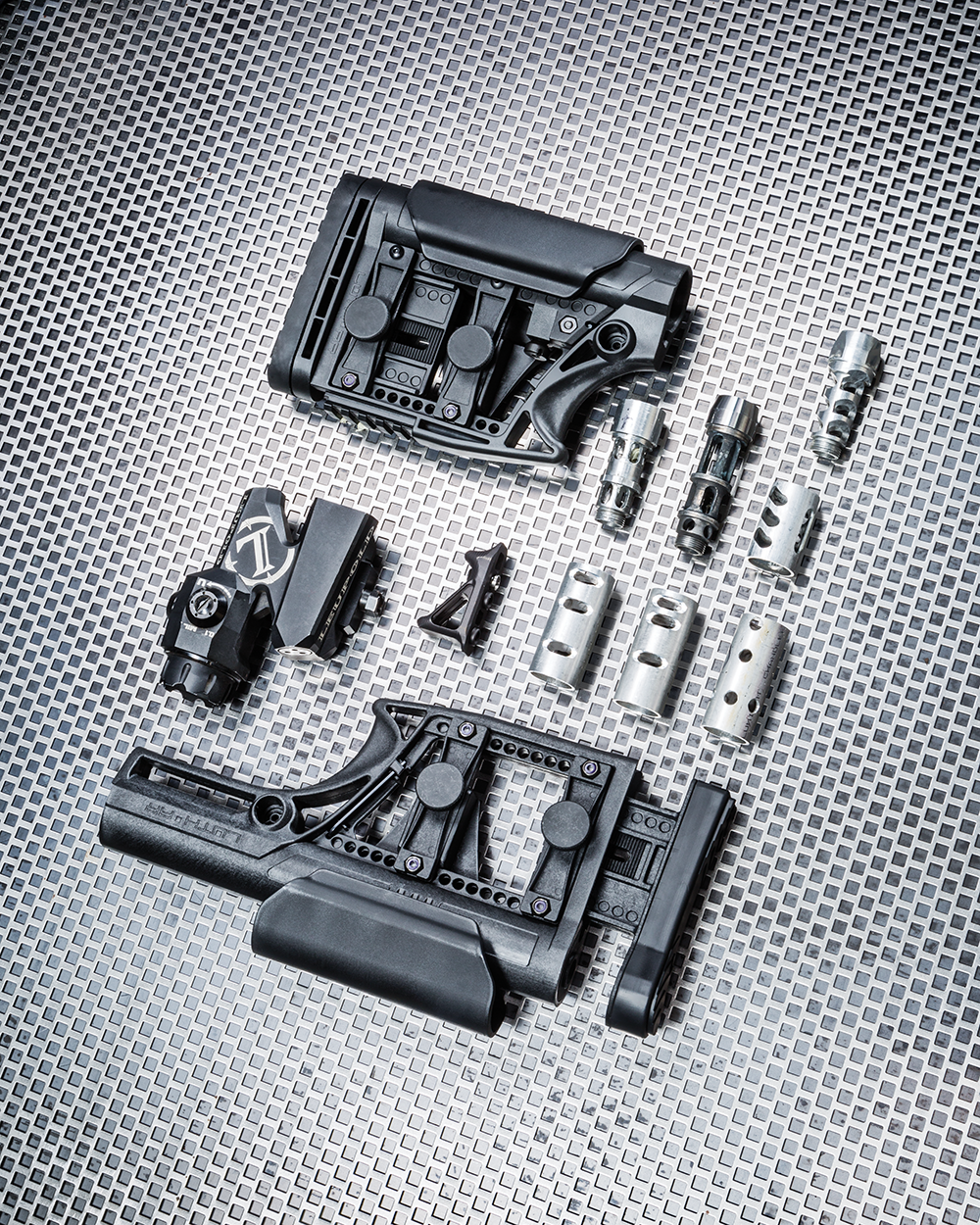
THE INNOVATION ENGINE
proof that the AR platform is a fertile breeding ground for new ideas is not hard to find. In fact, it can feel like a futile effort to keep on top of the innovation in this market. Entrepreneurs churn out products that are lighter, stronger, cheaper, more ergonomic, or better performing at a dizzying rate.
There is no component of the AR that someone isn’t trying to improve. Optics, ammo, slings, stocks, barrels—you name it, all are being rethought and reimagined.
1. LUTH-AR MBA STOCKS
These stocks (at the top and bottom of the image) adjust for cheek height, length of pull, and angle of recoil pad, while weighing less than most other aftermarket stocks.
2. LEUPOLD DEVO
This innovative 6X optic works in conjunction with red-dot sights. The optics stack so the shooter can quickly transition from 1X to 6X with a slight eye movement. (Center left)
3. ODIN WORKS HANDSTOP
This low-profile handstop went through dozens of iterations before the design was finalized. The result is an ergonomic component that doesn’t add bulk to the rifle. (Center)
4. ODIN WORKS PROTOTYPE MUZZLE BRAKE
Here is a first look at a new muzzle brake from Odin Works. The modular design allows the shooter to use different sleeves to customize a rifle’s recoil impulse. (Center right)
Photographs by Jeff Wilson

